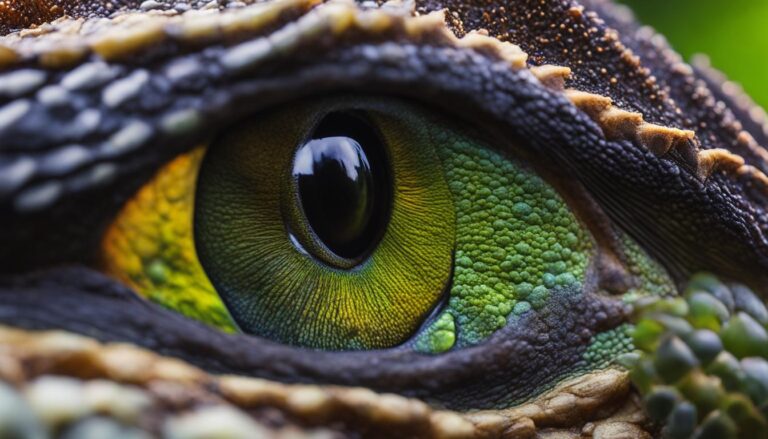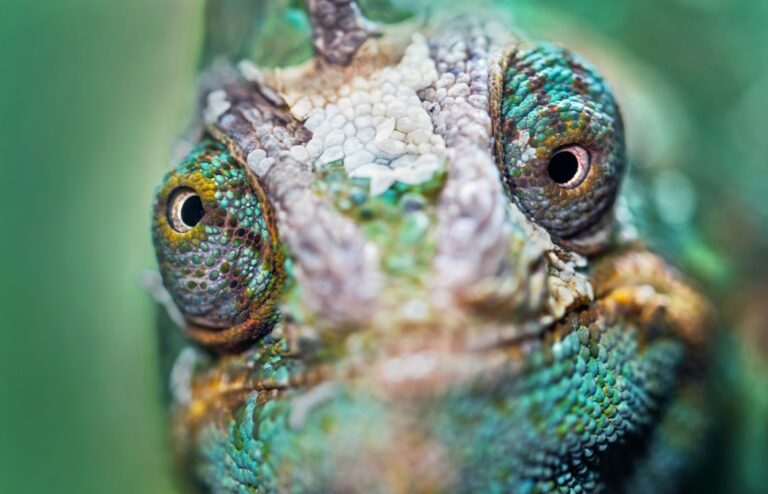Are Chameleons Friendly?
Chameleons are fascinating creatures known for their ability to change color and blend into their surroundings. They are native to Africa, Madagascar, and parts of Asia, and are highly adaptable to various environments. Understanding chameleon behavior is crucial for their well-being as pets, as it allows owners to provide the appropriate care and create a suitable environment for them.
Table of Contents
Understanding Chameleon Behavior
Chameleon behavior is complex and influenced by various factors. They are known for their solitary nature, spending most of their time alone in the wild. However, they do exhibit social behavior during mating season or when competing for territory. Understanding these behaviors can help owners create a comfortable and stress-free environment for their chameleons.
Factors that affect chameleon behavior include temperature, humidity, lighting, and the presence of other animals. Chameleons are ectothermic, meaning they rely on external sources of heat to regulate their body temperature. Maintaining the proper temperature gradient in their enclosure is essential for their overall health and behavior.
There are also common misconceptions about chameleon behavior that need to be addressed. One such misconception is that chameleons change color to match their surroundings. In reality, they change color as a response to temperature, light, mood, and social interactions.
The Nature of Chameleons: Solitary or Social Creatures?
Chameleons are primarily solitary creatures, spending most of their time alone in the wild. However, during mating season or when competing for territory, they may exhibit social behavior. It is important to note that not all chameleon species have the same social tendencies.
Some species, such as the veiled chameleon (Chamaeleo calyptratus), are more tolerant of other individuals and can be kept in groups under certain conditions. However, other species, like the panther chameleon (Furcifer pardalis), are highly territorial and should be kept alone to prevent aggression.
Keeping chameleons in groups has its pros and cons. On one hand, it can provide social stimulation and reduce stress for some individuals. On the other hand, it can also lead to competition for resources and territorial disputes. It is important to carefully consider the species and individual temperament before deciding to keep chameleons in groups.
How Chameleons Communicate: Signs of Aggression and Friendliness
Chameleons communicate through a variety of visual signals. These signals can indicate aggression or friendliness, allowing individuals to establish dominance or avoid conflict. Understanding these communication cues is crucial for owners to interpret their chameleon’s behavior and respond accordingly.
Signs of aggression in chameleons include hissing, puffing up their body, displaying their throat pouch, and darkening of their coloration. These behaviors are often accompanied by body language such as head bobbing or lunging. It is important to give the chameleon space and avoid provoking them further when they display signs of aggression.
On the other hand, signs of friendliness in chameleons include relaxed body posture, bright coloration, and slow movements. They may also display submissive behaviors such as flattening their body or avoiding direct eye contact. When a chameleon exhibits these behaviors, it is a good indication that they are comfortable and content in their environment.
Can Chameleons Recognize Their Owners?
Chameleons have a remarkable memory and can recognize familiar individuals, including their owners. While they may not show the same level of affection as other pets like dogs or cats, there is evidence to suggest that they can form a bond with their owners.
Studies have shown that chameleons can recognize familiar faces and respond differently to strangers versus familiar individuals. They may display more relaxed behavior and show less stress when interacting with their owners compared to unfamiliar people. However, it is important to note that individual chameleons may vary in their ability to recognize and respond to their owners.
Factors that can affect chameleon recognition include the frequency and quality of interactions with their owners, as well as the chameleon’s overall temperament. Regular handling and positive reinforcement can help strengthen the bond between a chameleon and its owner.
The Importance of Proper Handling for Chameleons
Proper handling is crucial for the well-being of chameleons. While they may not enjoy being handled as much as other pets, it is important to handle them correctly to minimize stress and potential harm.
When handling a chameleon, it is important to approach them slowly and gently. Avoid sudden movements or grabbing them from above, as this can startle and stress them. Instead, offer your hand or a branch for them to climb onto voluntarily. Support their body and avoid squeezing or applying excessive pressure.
Common mistakes to avoid when handling chameleons include overhandling, mishandling, and forcing them into uncomfortable situations. Chameleons are delicate creatures with fragile limbs and tails, so it is important to handle them with care. It is also important to respect their boundaries and give them time to adjust to new environments before attempting to handle them.
Proper handling can have several benefits for chameleons, including socialization, stress reduction, and improved overall health. Regular handling can help them become more comfortable with human interaction and reduce their fear response.
Do Chameleons Enjoy Human Interaction?
While chameleons may not enjoy human interaction in the same way that dogs or cats do, there is evidence to suggest that they can derive some level of enjoyment from it. Chameleons are curious creatures and may show interest in observing their surroundings, including their owners.
Some chameleons may display relaxed behavior when interacting with their owners, such as remaining calm and exploring their surroundings. They may also show signs of curiosity, such as following their owner’s movements with their eyes or turning their head to observe them.
Factors that can affect a chameleon’s enjoyment of human interaction include their individual temperament, previous experiences with humans, and the quality of the interaction. Positive reinforcement, such as offering treats or praise, can help create a positive association with human interaction and increase their enjoyment.
Factors That Affect Chameleon Friendliness
Chameleon friendliness can vary depending on several factors. While some chameleons may be naturally more friendly and tolerant of human interaction, others may be more reserved or even aggressive. Understanding these factors can help owners create a positive and comfortable environment for their chameleons.
Factors that can affect chameleon friendliness include genetics, early socialization, handling experiences, and overall health. Some chameleon species may be naturally more tolerant of human interaction, while others may be more prone to aggression or stress.
Early socialization plays a crucial role in shaping a chameleon’s behavior and tolerance towards humans. Chameleons that have been exposed to positive interactions with humans from a young age are more likely to be friendly and comfortable with human presence.
Proper handling and regular positive reinforcement can also contribute to a chameleon’s friendliness. Chameleons that have had positive experiences with handling are more likely to associate it with positive outcomes and be more tolerant of it in the future.
Chameleon Body Language: Interpreting Their Mood and Intentions
Chameleons communicate through body language, using various signals to convey their mood and intentions. Understanding these signals is crucial for owners to interpret their chameleon’s behavior and respond appropriately.
Common body language signals in chameleons include color changes, body posture, eye movements, and tail position. Darkening of coloration can indicate stress or aggression, while bright and vibrant colors can indicate relaxation and contentment.
Body posture can also provide valuable information about a chameleon’s mood. A relaxed chameleon will have a slightly curved body, while a stressed or defensive chameleon may flatten its body or puff up its throat pouch.
Eye movements can also be indicative of a chameleon’s mood. Wide-eyed and alert behavior may indicate curiosity or interest, while narrowed eyes can indicate stress or aggression.
The position of the tail can also provide insights into a chameleon’s mood. A curled tail is often a sign of contentment, while a straightened or raised tail can indicate aggression or fear.
Tips for Building a Positive Relationship with Your Chameleon
Building a positive relationship with your chameleon takes time and patience. Here are some tips to help you bond with your chameleon:
1. Respect their boundaries: Give your chameleon time to adjust to their new environment and avoid forcing them into uncomfortable situations.
2. Offer treats and positive reinforcement: Use treats or praise to reward your chameleon for calm behavior and positive interactions.
3. Spend time near their enclosure: Chameleons are curious creatures and may enjoy observing their surroundings, including their owners. Spend time near their enclosure to allow them to become familiar with your presence.
4. Handle them gently and with care: When handling your chameleon, approach them slowly and support their body to minimize stress and potential harm.
5. Provide enrichment: Create an enriching environment for your chameleon by offering branches, plants, and hiding spots. This can provide mental stimulation and reduce boredom.
Building a positive relationship with your chameleon can have several benefits, including reduced stress, improved overall health, and increased enjoyment of human interaction.
The Benefits and Risks of Keeping a Chameleon as a Pet
Keeping a chameleon as a pet has its benefits and risks. Understanding these can help potential owners make an informed decision and provide the best care for their chameleon.
The benefits of keeping a chameleon as a pet include their unique appearance, low maintenance requirements, and the opportunity to observe their fascinating behavior. Chameleons can be a great choice for reptile enthusiasts who are looking for a visually striking and interesting pet.
However, there are also risks associated with keeping a chameleon as a pet. Chameleons have specific care requirements, including temperature and humidity regulation, UVB lighting, and a suitable enclosure. Failure to meet these requirements can lead to health issues and stress for the chameleon.
Another risk is the potential for aggression or stress in chameleons. Some individuals may not tolerate handling or human interaction well, which can lead to stress and potential harm for both the chameleon and the owner.
To minimize these risks, it is important to research and understand the specific needs of the chameleon species you are considering as a pet. Providing the appropriate care, handling them correctly, and creating a suitable environment can help ensure the well-being of your chameleon.
Understanding chameleon behavior is crucial for providing the best care and creating a suitable environment for these fascinating creatures. Chameleons are primarily solitary creatures but may exhibit social behavior during mating season or when competing for territory. They communicate through visual signals and can recognize familiar individuals, including their owners.
Proper handling, respect for their boundaries, and positive reinforcement can help build a positive relationship with your chameleon. However, it is important to remember that individual chameleons may vary in their tolerance for human interaction.
Keeping a chameleon as a pet has its benefits and risks. It is important to research and understand their specific care requirements before deciding to bring one into your home. By providing the appropriate care and creating a suitable environment, you can ensure the well-being of your chameleon and enjoy the unique experience of owning one of these remarkable creatures.
If you’re interested in learning more about chameleons and their behavior, you might also enjoy reading the article “Why Do Chameleons Rock Back and Forth?” This fascinating piece explores the reasons behind this unique behavior and provides insights into the chameleon’s natural instincts. Discover the science behind their rocking motion and gain a deeper understanding of these captivating creatures. Read more here.







